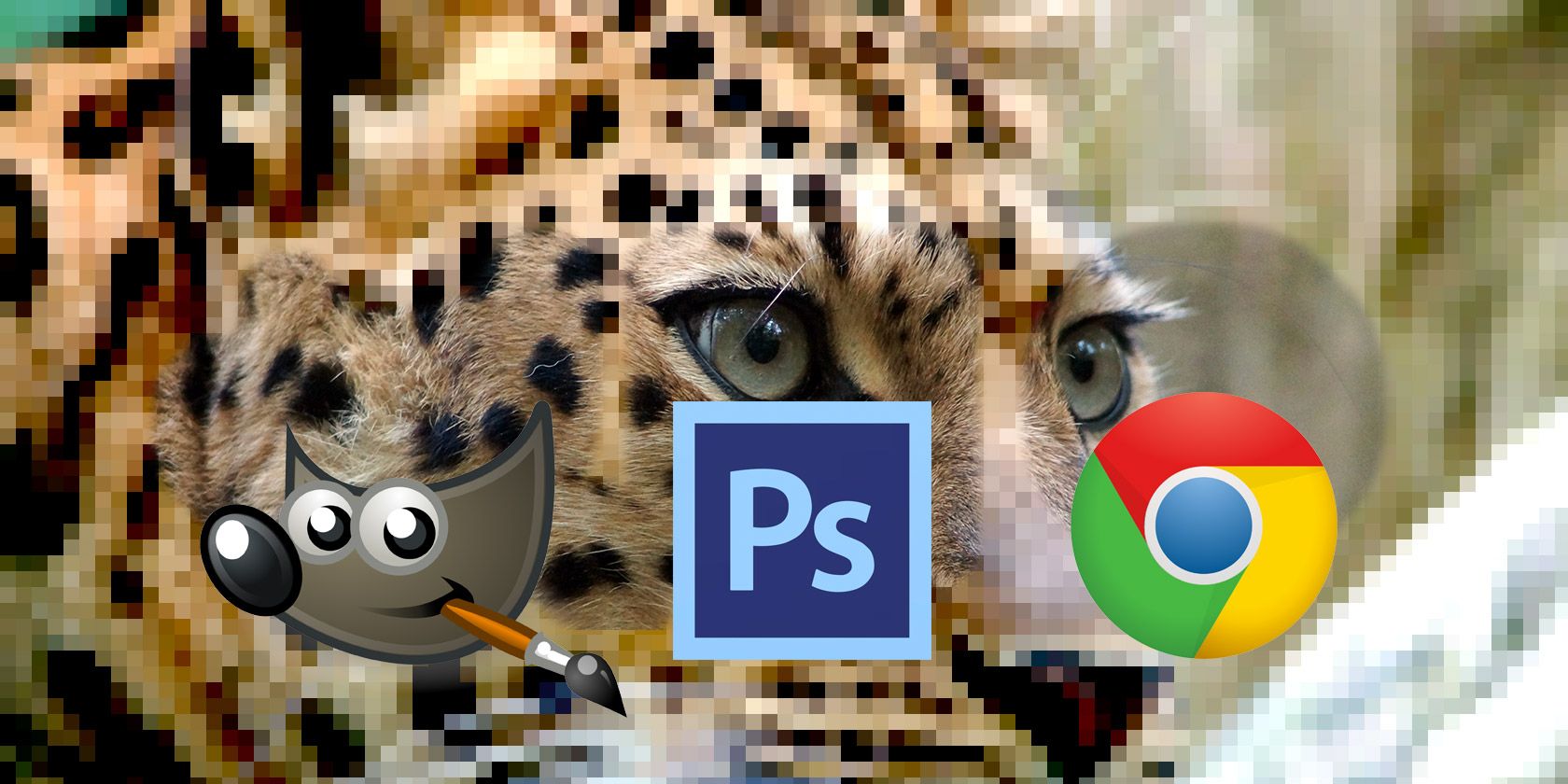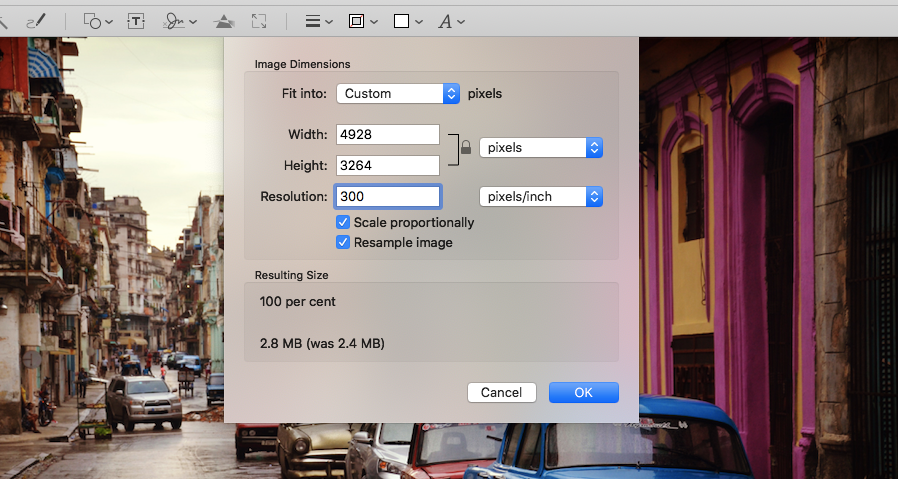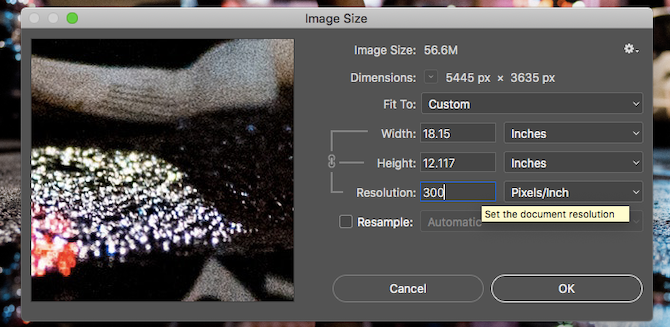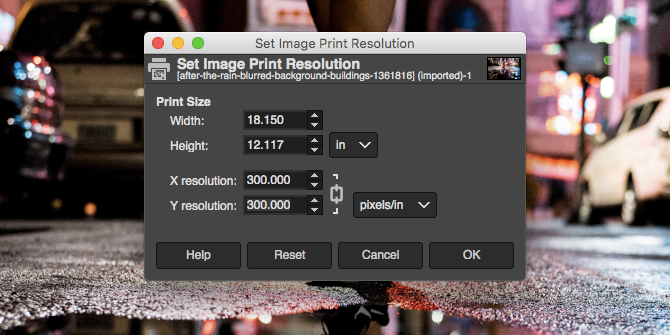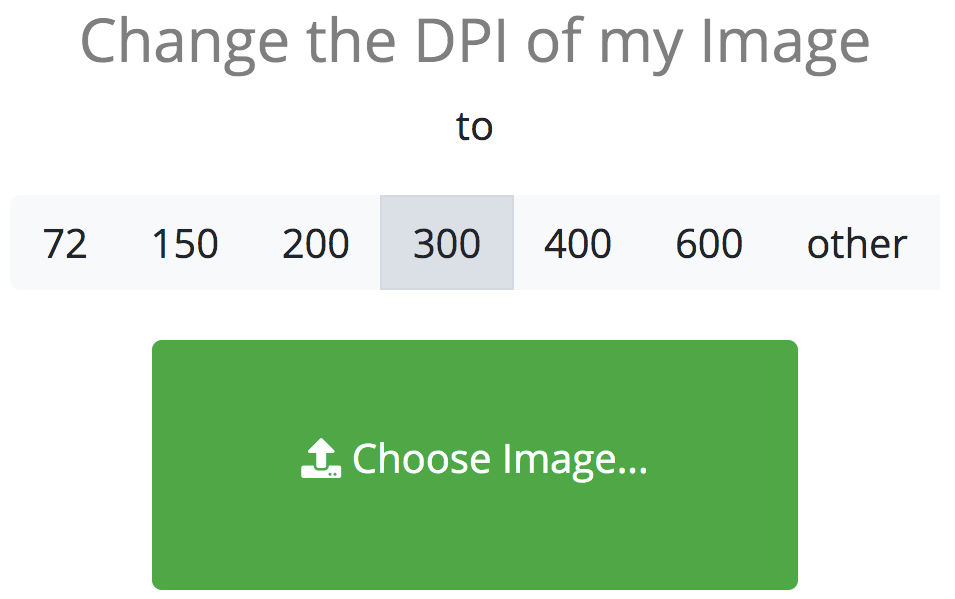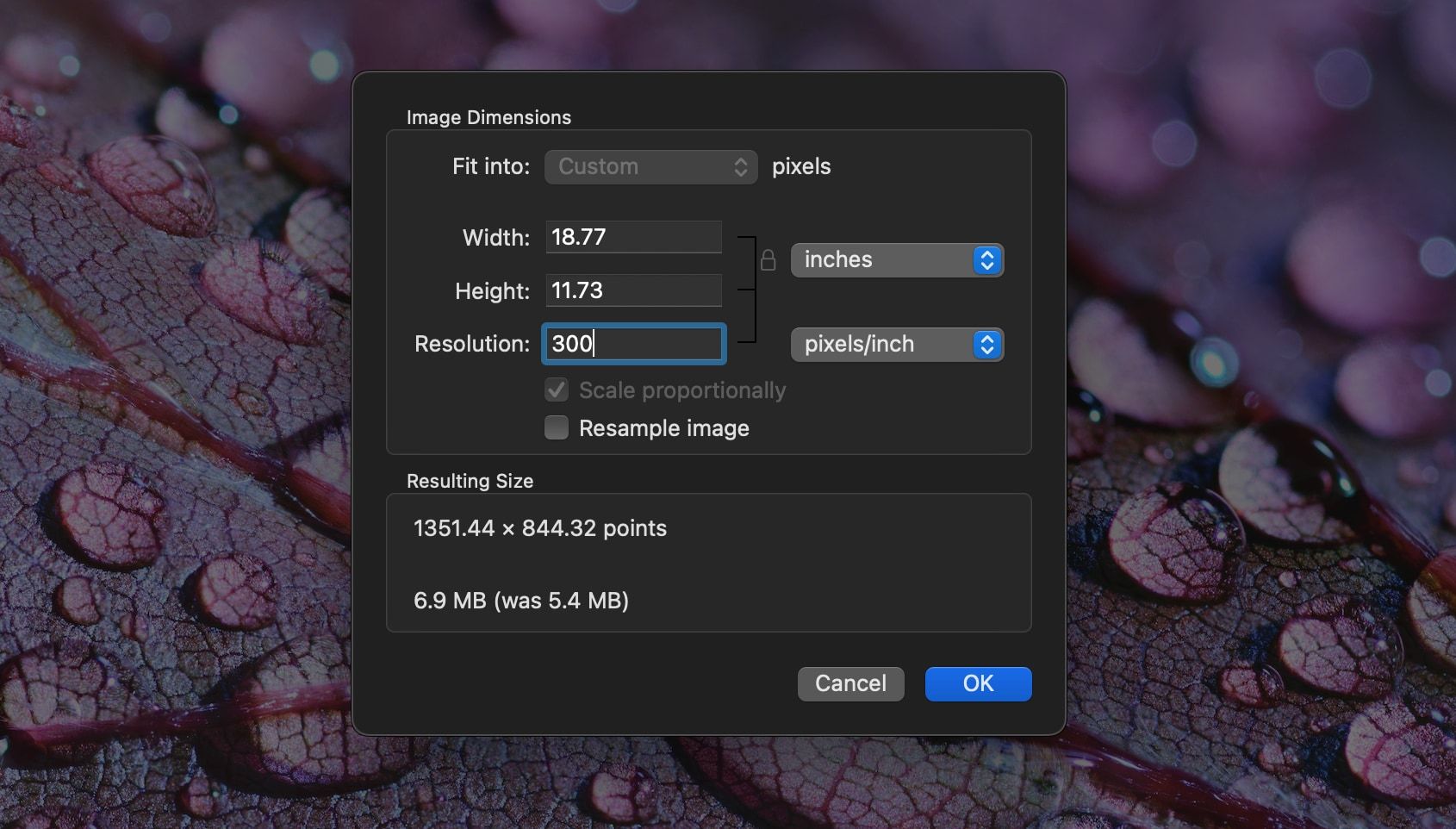Printing a photo or illustration seems like it should be as easy as printing anything else, but it isn't. Set the DPI incorrectly, and you'll end up with glossy photos that are blurry and low quality, or a poster that prints no larger than a postage stamp.
If you're a designer or photographer, or just want to make sure your vacation shots print without problems, you need to understand what DPI is, and how to change your print resolution. Let's take a look at everything you need to know about DPI and how to change the DPI of an image.
What Is DPI and What Does 300 DPI Mean?
DPI stands for "dots-per-inch," and is a specification for printing and for setting the print resolution of an image.
A print is made from millions of tiny dots of ink. The DPI setting determines how many dots the printer drops onto every square inch of the image—300 dpi means 300 dots of ink, while 150 dpi is half as much.
You need to understand how DPI works because it controls the two most important things in printing:
- The quality of your print. In simple terms, a higher DPI means a higher quality print. Most good home printers can output at 300 dpi, which is the recommended minimum for high-quality printing, and professional printers much higher.
- The size of your print. A pixel in a digital image is equivalent to a dot in a print. So, if you print an 1800 pixel wide image at 300 dots per inch, the printed image will be six inches wide. Print the same image at 180 dpi and it will be 10 inches wide. It's basic math—just divide the number of pixels by the DPI.
How DPI Affects Your Prints
Here's an image to illustrate. Below are two lines that consist of the same 40 blocks—the same size and same color. The blocks are less tightly packed on the top line, equating to a lower DPI; and more tightly packed on the bottom line to represent a higher DPI.
The effect is clear. On the Lower DPI line, the gradient is a lot less smooth. You can see clear edges against each of the blocks. The line is also a lot longer.
On the Higher DPI line, the gradient is much smoother. It's almost seamless. The line is also a lot shorter.
This demonstrates the balancing act you often need to make when setting the print resolution: quality versus size. A lower DPI image prints larger, but at a lower quality; increase the DPI and it will print smaller. If you're working with low res images, then you'll have to make a trade-off between the two.
Where possible, you should always save your work in as high a resolution as you can. Because resizing your image to make it larger won't improve the print quality.
What DPI Should You Use?
All this begs the question: What is the best DPI to print at?
The standard rule is that you should aim to print at 300 dpi. This is great quality for photographs as it's thought to be around the limit of what the eye can take in. You can go higher than 300 dpi if your image is big enough, but it's unlikely anyone will notice the difference.
But if your image is too small to print at 300 dpi, don't worry. The intended viewing distance of the print plays a large role in what resolution you need.
For images you'll hold in your hands, like photos, leaflets, or magazines, 300 dpi or higher is the target, but 250 will do at a push.
With posters or pictures that you're going to frame, you can get away with a lower resolution because you'll mostly be looking at them from a few feet away. 200 dpi should be okay, or even a little lower (maybe 180 dpi). You can also get away with a lower resolution when you're printing on different materials, like canvas, which hold less detail due to their texture.
And this continues. The further away you intend to look at your image, the lower you can set the resolution. A billboard poster designed to be seen from across the street might be printed at as low as 20 dots per inch.
These rules only apply to photos and raster images. If you're doing graphic design work with vector images, then you can resize them as much as you like without any loss of quality.
How to Check the DPI of an Image
To find out an image's DPI in Windows, right-click on the file name and select Properties > Details. You'll see the DPI in the Image section, labeled Horizontal Resolution and Vertical Resolution.
On a Mac, you need to open the image in Preview and select Tools > Adjust Size. It's labeled Resolution.
How to Change the DPI of an Image: 4 Ways
You can change an image's DPI in most graphics packages, including the best budget design apps. You'll need an app or online service if you're using Windows, as you can't change the DPI natively otherwise. You can change the resolution in Preview on a Mac.
Remember that DPI is only a measurement of print resolution. Changing the DPI does not change the size of your digital image or the size of the file.
If you're working with an image you think you'll need to print, it's a good idea to set your target print resolution before you resize it. That will help to ensure you don't make it too small to print safely at your preferred size.
1. How to Change the DPI in Photoshop
To change an image's DPI in Photoshop, go to Image > Image Size. Uncheck Resample Image, because this setting will upscale your image, which will make it lower quality.
Now, next to Resolution, type in your preferred resolution set as Pixels/Inch. Notice how the Width and Height figures change, too. This shows you the physical size your image will print.
You can specify the width and height instead, in inches or centimeters, in order to fit it to a particular paper size. If you do this, just make sure your DPI doesn't drop too low to degrade the quality. That can happen if your image is small.
2. How to Change the DPI In GIMP
To change the DPI of an image in GIMP, go to Image > Print Size. Enter your preferred DPI next to X Resolution, set in pixels/in. The Y Resolution should update automatically, too.
Like in Photoshop, you can set the physical width and height instead in order to print at a specific size. Again, make sure the DPI doesn't drop too low when you do this.
3. How to Change the DPI Online for Free
If you're in a pinch and you don't have your graphics program of choice to hand, you can always change the DPI of an image with Convert Town, a DPI-changing web app, for free online.
All you have to do is input the DPI you need the image changed to (common resolutions like 300 dpi are available as handy presets), drag and drop the file to upload it, and wait. When it's done converting, it should automatically download your updated image to your default download folder.
There are lots of other services that work in similar ways. We also like Clideo, as it lets you import images from Google Drive, Google Photos, and Dropbox as well as from your desktop.
4. How to Change the DPI in Preview on macOS
You should use one of the above options if you're using Windows. There's a built-in solution on a Mac: Preview. The default app for viewing images also lets you change the DPI of those images, and it's really easy to do.
Open the image in Preview and go to Tools > Adjust Size. Uncheck the box labeled Resample image to ensure you don't increase or decrease the number of pixels in the image. Now, with Resolution set to pixels/inch, type in your target resolution (such as 300).
You'll notice that the width and height also change, showing you the new size the image will print at.
Increase the DPI of an Image
Understanding the meaning of DPI is so important when you're printing. It's easy to ruin entire projects because you're working at too low a resolution, or to get bad prints because you're printing them larger than they can handle. Now you understand how it works, you can choose the right DPI for your photos, and make sure you get perfect prints every time.

